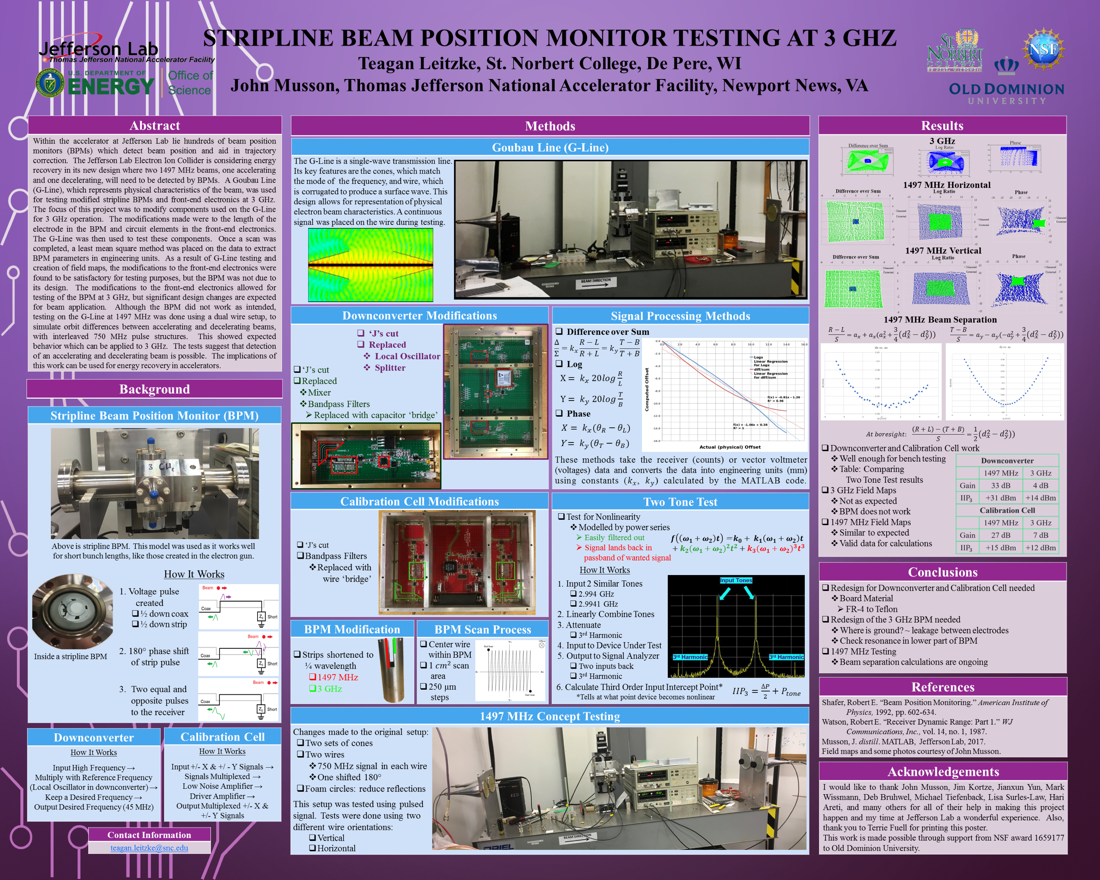Undergraduate Research at Jefferson Lab
Stripline Beam Position Monitor Testing at 3 GHz
Student: Teagan Leitzke
School: St. Norbert College
Mentored By: John Musson
Within the accelerator at Jefferson Lab lie hundreds of beam position monitors (BPMs) which detect beam position and aid in trajectory correction. The Jefferson Lab Electron Ion Collider is considering energy recovery in its new design where two 1497 MHz beams, one accelerating and one decelerating, will need to be detected by BPMs. A Goubau Line (G-Line), which represents physical characteristics of the beam, was used for testing modified stripline BPMs and front-end electronics at 3 GHz. The focus of this project was to modify components used on the G-Line for 3 GHz operation. The modifications made were to the length of the electrode in the BPM and circuit elements in the front-end electronics. The G-Line was then used to test these components. Once a scan was completed, a least mean square method was placed on the data to extract BPM parameters in engineering units. As a result of G-Line testing and creation of field maps, the modifications to the front-end electronics were found to be satisfactory for testing purposes, but the BPM was not due to its design. The modifications to the front-end electronics allowed for testing of the BPM at 3 GHz, but significant design changes are expected for beam application. Although the BPM did not work as intended, testing on the G-Line at 1497 MHz was done using a dual wire setup, to simulate orbit differences between accelerating and decelerating beams, with interleaved 750 MHz pulse structures. This showed expected behavior which can be applied to 3 GHz. The tests suggest that detection of an accelerating and decelerating beam is possible. The implications of this work can be used for energy recovery in accelerators.

Citation and linking information
For questions about this page, please contact Education Web Administrator.
